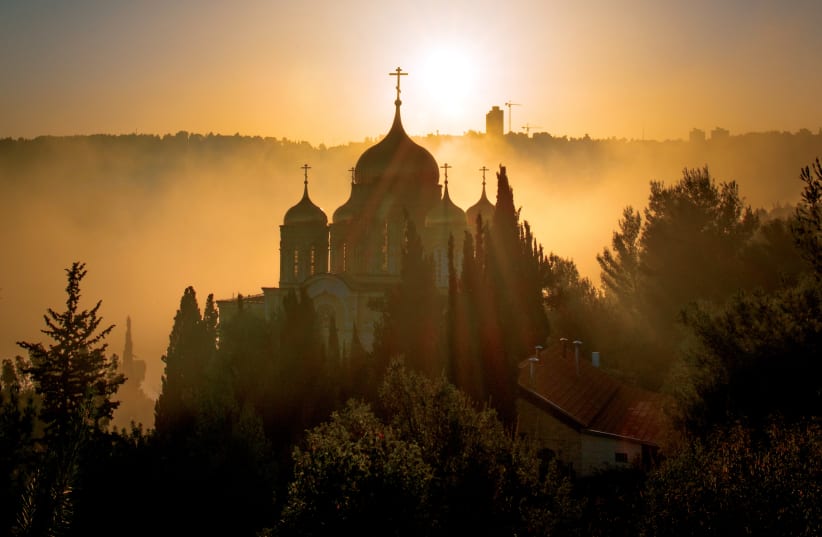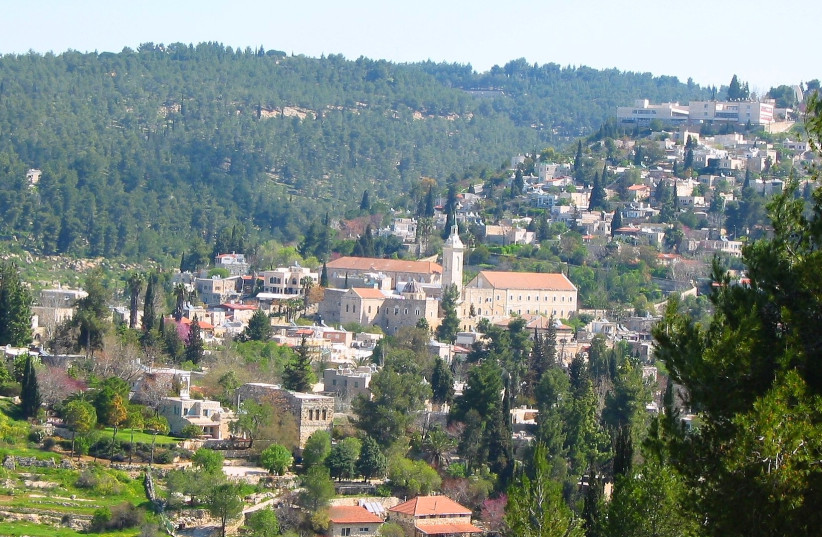Save the girls
While haredi society is reeling from the suicide of Chaim Walder and the revelations about multiple sexual assaults in the sector, Jerusalem girls are learning to defend themselves against sexual harassment. Hannah Weinberger, co-founder of El Halev, launched a special course in collaboration with municipal social services for students from haredi schools in the city.
During the five sessions, girls in eighth and ninth grades learned to risky identify situations and were instructed how to respond in the event of an attempt to harm them or someone they know. The organizers explained the goal was to teach haredi girls not only how to defend themselves from sexual harassment, but to provide them with an awareness of how they can identify harm, and if someone touches them without their consent. El Halev is an Israeli nonprofit co-founded in 2003 with Yehudit Zicklin-Sidikman and strives to prevent sexual, emotional and physical violence through innovative educational programs.
Cry for Ein Kerem
In the Carmit neighborhood, a construction plan promoted by the municipality is considered by environment activists to be a new threat that will destroy an urban nature site, lower the chances of recognition as a world heritage site, and harm an important urban renewal project. This past Wednesday, a plan for the construction of a new neighborhood in the Carmit complex, adjacent to the village of Ein Kerem, was set to be discussed by the local planning and construction committee. The plan includes construction of 1,250 apartments and terraced towers up to 15 floors, including a school, a few kindergartens, synagogues and mikvaot.
The plan provoked harsh criticism; the main argument being the proposed construction will severely damage the village of Ein Kerem, which is a world-class cultural, religious and tourism heritage asset. In addition, the plan harms an uncommon urban nature site, where one of the largest concentrations of rare plants is located. This project is situated in the proximity of the area of the Olsbanger-Brazil urban renewal complex and undermines the urban interest of improving affordable housing for vulnerable populations.
A meeting of Ein Kerem residents, the Sustainable Jerusalem Lobby, the Society for the Protection of Nature, the Jerusalem Mountains Rescue Movement, Yuvalim local council, Deputy Mayor and advocate Yossi Havilio and councilwoman Laura Wharton are expected to oppose the plan, to which even church institutions are opposed. Naomi Tzur, chairwoman of the Sustainable Jerusalem Lobby, said, “There is no justification for changing the designation of the land in favor of a development initiative, which [if realized] will lead to scenic, environmental, social and economic damage. The Ein Kerem Basin landscape is a cultural and economic asset, a magnet for local and global tourism.”
Bad awakening
The two council members who left the Hitorerut faction at city council – Yamit Yoeli-Ella and Avishai Cohen – were officially recognized as a new and separate faction at the last city council meeting of 2021. There is a proposal to appoint the two as members of the city administration and for them to receive portfolios.
As a result of this split, Hitorerut will now have only one representative at the local planning and construction committee and at the municipal allocations committee, a severe blow for the only opposition list. Sources at Safra Square added that the two are seriously considering joining Mayor Moshe Lion’s list, which doesn’t have any representative on the city council, and would consolidate his position.
Hitorerut leader Ofer Berkovitch responded, “In light of Lion’s entanglement and his actions in violation of the law, and following our appeal to the court, which would have ruled that Lion acted in a prohibited manner, Ms. Yoeli-Ella and Mr. Cohen will be defined as retirees and will be subject to statutory sanctions.”
Berkovitch added that in defecting from Hitorerut to get more desirable positions, they had betrayed the electorate that had brought them to city council: “This is not the politics we believe in.”
Free market
Economy Minister Orna Barbivay visited the Mahaneh Yehuda market earlier this week for a professional tour with Market Traders’ Committee chairwoman Tali Friedman. Friedman introduced the minister to the needs of the shuk and its merchants in particular, emphasizing its significance far beyond being a place where vegetables are sold: being a longstanding and wide-ranging cultural asset.
At the end of the meeting, Barbivay came up with an idea – to establish an inter-ministerial body led by the Economy Ministry and, whose purpose is to unite a number of government ministries and integrate the needs of all markets in Israel, on a variety of issues including tourism, welfare, heritage and more. Friedman expressed her satisfaction with the program’s potential to strengthen and develop the market.
Stinky flow
Sewage flow to the Nahal Prat Nature Reserve has led to terrible environmental pollution and significant damage to the delicate ecosystem of animals and plants of great environmental value. The reserve has also has historical-archaeological value, with particular importance to Christians.
According to Hagihon municipal water company findings, this was the result of illegal dumping of large amounts of construction waste on the route of the main sewer line in the city’s northeast, near the village of Anata. Opposition head Ofer Berkovitch (Hitorerut) wondered what – if at all – are the actions being taken by Hagihon to address this serious pollution crisis, but said he has yet to get a satisfying answer.
But as the sewage continued to flow, as described by an environment activist on social media: “The fish died, the crabs died, the birds disappeared, the rodents and mammals fled, the plants are in advanced dying processes, the stench envelops the valley and what was until two weeks ago an education site for an ecosystem, disappeared and looks now like 30 km. of open sewer pipe.”
A Hagihon spokesperson responded to In Jerusalem, “Hagihon has addressed the problem of sewage flow to the wadi in recent days, under impossible conditions for a solution. Hagihon is the body that solved the problem and is not responsible for its formation. Due to illegal dumping of large amounts of debris and construction dirt on the route of the main sewer line in the location, all sewer cells were blocked – blockages that needed to be discovered to treat and open them.”
Recycling issues
Residents who have been careful over the years to separate products and prepare their garbage for recycling complain that recycling containers have disappeared from the city streets. According to the municipality, the new deposit law, which came into force on December 2, abolished the placement of bottle recycling facilities in Jerusalem public spaces. The responsibility for recycling the bottles was transferred to the Environmental Protection Ministry, which through the recycling corporation ELA, placed new recycling facilities in supermarket chains.
On the issue of packaging recycling containers – the orange containers – the municipality director-general instructed the Operations Administration to map possible locations throughout the city for their placement. This mapping will be presented to the CEO and the Environmental Protection Ministry in the coming weeks before making a decision where – if at all – to situate them. For now, there is only one such container, in the Beit Hakerem neighborhood.
This move, adds a spokesman for Safra Square, is in addition to the transfer of all the garbage disposed of from the city to the Grint factory, one of the largest and most advanced factories in the world, which centralizes, sorts and separates all types of garbage. Details about the location of the various containers throughout the city can be found on the municipal website: www.jerusalem.muni.il/he/residents/environment/improvingcity/recycling

